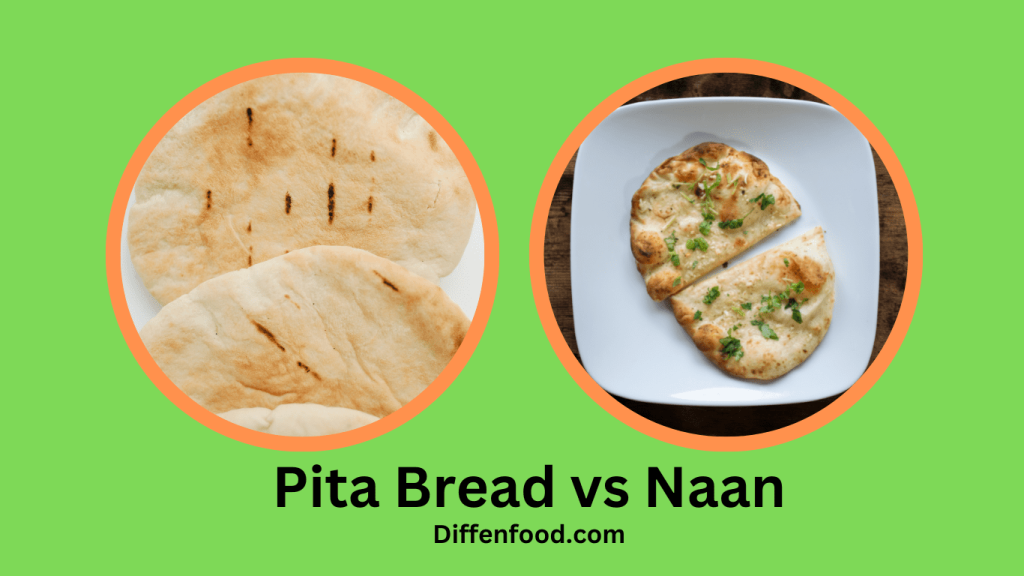
Fries are a beloved comfort food around the world, but there are different styles of fries, including American fries and French fries.
Understanding the differences between American fries and French fries can help you appreciate the variety and uniqueness of different types of fries. It can also help you make informed choices about which type of fries to order or make at home.
In this article, we’ll cover the history and origin of American and French fries, differences in preparation and cooking techniques, taste and texture, health and nutrition, regional variations, cultural significance, DIY recipes and tips, and the debate over which fries are better.
- Understanding American Fries
- Understanding French Fries
- American Fries Vs French Fries: History and Origin
- Differences in Preparation and Cooking Techniques
- Differences in Taste and Texture
- Differences in Health and Nutrition
- Differences in Regional Variations
- Differences in Cultural Significance
- DIY Recipes and Tips
- Debate over Which Fries are Better
- Conclusion
- Comparison list
Understanding American Fries
“American fries” typically refers to a type of breakfast potatoes that are sliced into thin pieces and pan-fried until crispy. They are often seasoned with salt, pepper, and other spices, and may be served with eggs, bacon, or other breakfast foods. In some regions, “American fries” may also refer to home fries or hash browns.
Understanding French Fries
French fries are a popular fast food and snack item made from sliced potatoes that are deep-fried until crispy and golden brown. The potato slices are typically cut into long, thin strips and then fried in hot oil until they are crispy on the outside and soft on the inside. French fries are usually salted and served hot, and they are often served with ketchup or other dipping sauces.
American Fries Vs French Fries: History and Origin

The exact origins of American fries are unclear, but they are believed to have originated in the United States in the early 1900s. They were likely inspired by traditional English fried potatoes, which were thinly sliced and fried until crispy. American fries became popular in diners and cafes, where they were often served as part of a breakfast platter.
Contrary to popular belief, French fries did not actually originate in France. They are believed to have been invented in Belgium in the late 1600s, where they were served as a substitute for fried fish during times when the rivers were frozen and fishing was impossible. The dish eventually spread to France, where it became popular among both the upper and lower classes.
Differences in Preparation and Cooking Techniques

Differences in cutting and shaping – American Fries vs French Fries
American fries are typically cut into thicker slices than French fries and are often wedge-shaped or irregularly shaped. In contrast, French fries are thinly sliced and cut into uniform, shoestring-like shapes. Additionally, while American fries are often pan-fried, French fries are typically deep-fried until crispy.
Differences in prepping and soaking – American Fries vs French Fries
American fries are often boiled or steamed before being fried, which can help to soften the potatoes and reduce cooking time. In contrast, French fries are usually soaked in water to remove excess starch before being fried, which can help to create a crispy texture on the outside. Additionally, while American fries are typically seasoned with salt and other spices during or after cooking, French fries may also be seasoned with herbs or spices before they are fried.
Differences in frying and seasoning – American Fries vs French Fries
American fries are usually fried in oil or butter until they are tender on the inside and crispy on the outside. They are often seasoned with salt and pepper or other seasonings. French fries are typically fried twice to achieve maximum crispiness, and are often seasoned with salt and served with sauces like ketchup or mayonnaise.
Differences in Taste and Texture

Differences in flavor
American fries have a softer, creamier texture and a more subtle flavor than French fries, which are crispy and have a distinctive potato flavor.
Differences in texture
American fries are less crispy and have a softer, creamier texture than French fries, which are crispy on the outside and fluffy on the inside.
Preferences among consumers
Preferences for American or French fries vary among consumers and depend on personal taste and preference. Some people prefer the soft and creamy texture of American fries, while others prefer the crispy and fluffy texture of French fries.
Differences in Health and Nutrition

Differences in calorie and fat content:
American fries are typically higher in calories and fat than French fries due to their thicker cut and use of oil or butter for frying. French fries, on the other hand, are usually thinner and use less oil, resulting in a lower calorie and fat content.
Differences in vitamins and minerals:
Both American and French fries are high in carbohydrates and sodium, but French fries are slightly higher in potassium and vitamin C due to the fact that they are often prepared with the skin still on.
Health implications of eating fries:
While fries can be a tasty treat, they are also high in calories, fat, and sodium, and can contribute to obesity, heart disease, and other health problems if consumed in excess. It’s important to enjoy fries in moderation and to choose healthier cooking methods, such as baking or air frying.
Differences in Regional Variations

American regional variations:
Different regions of the United States have their own unique styles of American fries, such as the “home fries” of the Northeast, the “hash browns” of the Midwest, and the “smothered fries” of the South.
French regional variations:
France has its own regional variations of fries, such as the “pommes frites” of Paris, which are thicker and softer than traditional French fries, and the “frites flamandes” of northern France, which are cooked in beef drippings for added flavor.
Unique combinations and popular dishes:
Both American and French fries are often combined with other ingredients to create unique and delicious dishes, such as poutine (a Canadian dish made with French fries, cheese curds, and gravy), chili cheese fries (a popular American snack made with chili and cheese), and moules frites (a Belgian dish made with mussels and fries).
Differences in Cultural Significance

American and French cultural associations:
American fries are associated with a casual, diner or cafe culture, while French fries are associated with higher-end cuisine and international fast food chains.
Popularity and consumption habits:
Both American and French fries are popular around the world and are consumed in a variety of settings, from fast food restaurants to fine dining establishments.
Global impact and variations:
Fries have become a global phenomenon, with different countries putting their own spin on the classic snack. Some examples include “curry fries” in India, “poutine” in Canada, and “fish and chips” in England.
DIY Recipes and Tips

Tips for making American-style fries:
To make American-style fries, slice potatoes into thick wedges and boil or steam them until tender. Heat oil or butter in a skillet and fry the potatoes until they are golden brown and crispy on the outside. Season with salt and pepper or other seasonings as desired.
Tips for making French-style fries:
To make French-style fries, slice potatoes into thin, uniform strips and soak them in water for at least 30 minutes to remove excess starch. Heat oil in a deep fryer or skillet and fry the potatoes twice until they are crispy and golden brown. Season with salt and serve with your favorite dipping sauce.
Unique recipes and variations:
There are countless variations of fries, from loaded chili cheese fries to truffle fries with parmesan cheese. Get creative and experiment with different seasonings, toppings, and dips to create your own unique twist on this classic snack.
Debate over Which Fries are Better

Common arguments for American fries
Fans of American fries argue that they have a softer, creamier texture and a more subtle flavor than French fries. They also appreciate the thicker cut and the fact that they are often seasoned with herbs and spices.
Common arguments for French fries
Fans of French fries argue that they are superior due to their crispy texture, distinctive potato flavor, and versatility in terms of serving options and dipping sauces.
Ultimately, the debate over which fries are better comes down to personal preference. Some people prefer the soft and creamy texture of American fries, while others appreciate the crispy and fluffy texture of French fries.
Conclusion
In this article, we explored the differences between American fries and French fries, including their history and origin, preparation and cooking techniques, taste and texture, health and nutrition, regional variations, cultural significance, DIY recipes and tips, and the debate over which fries are better.
Final thoughts and recommendations
Fries are a delicious and beloved comfort food, but it’s important to enjoy them in moderation and choose healthier cooking methods whenever possible. Experiment with different styles and variations of fries to discover your own personal favorite.
Why not try making both American and French fries at home to compare and contrast the two styles? Whether you prefer the soft and creamy texture of American fries or the crispy and fluffy texture of French fries, there’s no denying that both types of fries are a delicious and satisfying treat.

Comparison list
| Category | American Fries | French Fries |
|---|---|---|
| History and Origin | United States | Belgium (Became popular in France among all classes) |
| in the 1900s | in the late 1600s | |
| Preparation | Thicker slices and often wedge-shaped | Thinly sliced and cut into uniform, shoestring-like |
| Often boiled or steamed before frying | Soaked in water to remove excess starch before frying | |
| Fried in oil or butter | Fried twice for maximum crispiness | |
| Taste and Texture | Softer, creamier texture and subtle flavor | Crispy texture and distinctive potato flavor |
| Less crispy and creamier texture | Crispy on the outside and fluffy on the inside | |
| Health and Nutrition | Higher in calories and fat | Lower in calories and fat |
| Slightly higher in potassium and vitamin C | ||
| Regional Variations | Home fries, hash browns, smothered fries | Pommes frites, frites flamandes |
| Cultural Significance | Associated with casual dining | Associated with higher-end cuisine and fast food chains |
| Popular around the world in a variety of settings | ||
| DIY Recipes and Tips | Slice potatoes into thick wedges and fry | Slice potatoes into thin, uniform strips and fry |
| Soak in water to remove excess starch before frying | ||
| Fry twice for maximum crispiness | ||
| Season with salt and serve with your favorite dipping sauce |


